CUSPIDATUM Alexander, 1946
Distribution : Mexico (Chiapas)
Description (by 't Hart & Bleij in IHSP, 2003) :
Glabrous subshrubs with fleshy branching stems, becoming decumbent with age, ± 25 cm long.
Leaves alternate, narrowly obovate, bluntly cuspidate, carinate, glaucous towards the base, ± 20 x 10 mm, ± 3 mm thick, light yellow-green.
Inflorescences : Flowering branches erect, axillary, inflorescences compact cymes, bracts erect, narrowly elliptic, obtuse, ± 7 mm, in the upper 5 cm of inflorescence.
FIowers 5-merous, subsessile, sepals unequal, oblanceolate, subacute, 3,5 - 5 mm, petals acute, apiculate-cucullate, canaliculate, white, ± 7 mm, erect, then spreading, anthers purplish-brown.
Cytology: 2n = 68
Ray Stephenson (Sedum, Cultivated Stonecrops, 1994, pp 223 - 224) :
Sedum cuspidatum is an uncommon member of Pachysedum group with few exciting qualities. Rising to only 15 cm (6 in) high, the plant is relatively dull. Light green leaves are tinged wine-red at the tips and tend to be quite upright - especially in drought conditions. Lower halves of stems are bare with leaf scars. Bare inflorescences carry a terminal cluster with a few large white flowers.
Habitat : Two disjunct localities in eastern Oaxaca and western Chiapas in the Southern Sierra Madre are the home of this stonecrop.
Main points of distinction : Small, apiculate, spurred, light green leaves on the upper half of highly textured stems are a good indicator. Petals are erect at the base. Sedum orbatum, its nearest relative, has larger leaves.
Variation : Both populations have n = 34. Most of the plants I have studied probably orig-inated from Dennis Pearson via Ron Evans. There appear to be two distinct clones in cultivation: one has dull green glabrous leaves, while the other is faintly glaucous, especially at the leaf bases. I am unable to say whether the two forms are evidence of the two disjunct colonies.
Horticulture : This is an easy but slow-growing species, susceptible to mealy-bug infestation. It is best grown in a pot or in an indoor rockery.
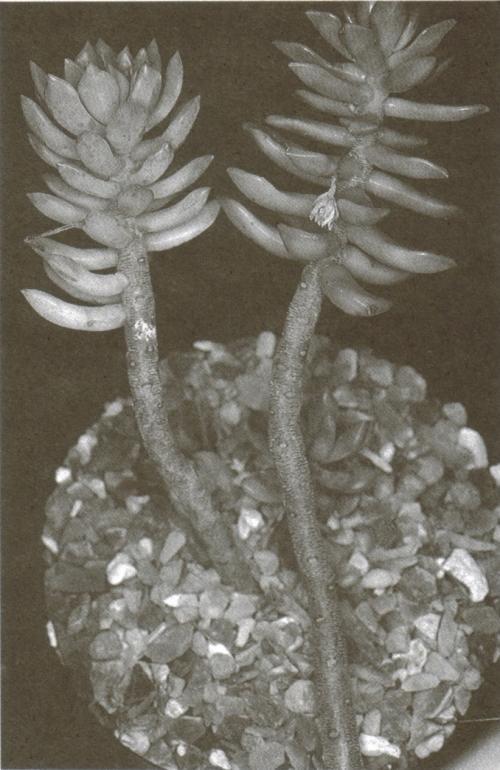
Two clones of Sedum cuspidatum. The shorter stem is about 11 cm (4 in) long.
This was given to Charles Uhl as S. eichlimii (a name I cannot trace). It is a different ploidy level of S. cuspidatum though Eggli does not suggest different levels of ploidy. Leaves were almost glaucous.
The "highly textured stem" - a distinctive feature of S. cuspidatum :
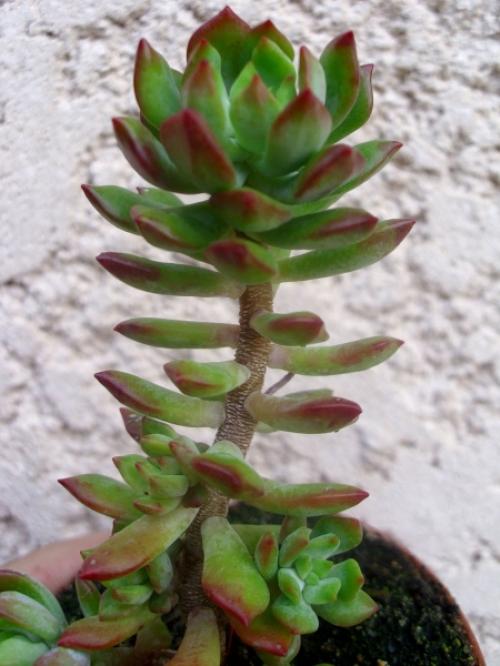
Photo Christophe Camassel
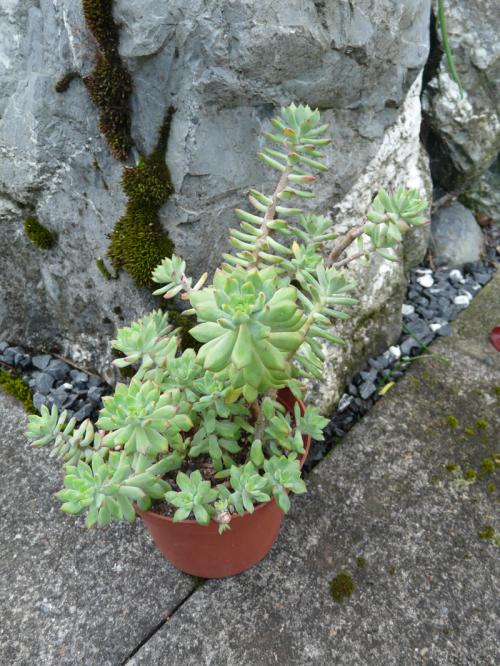
Photo Margrit Bischofberger
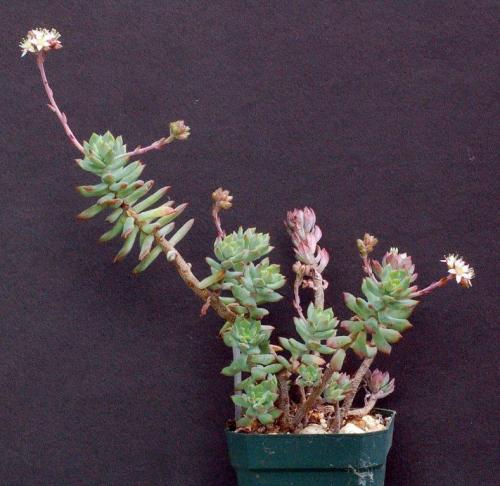

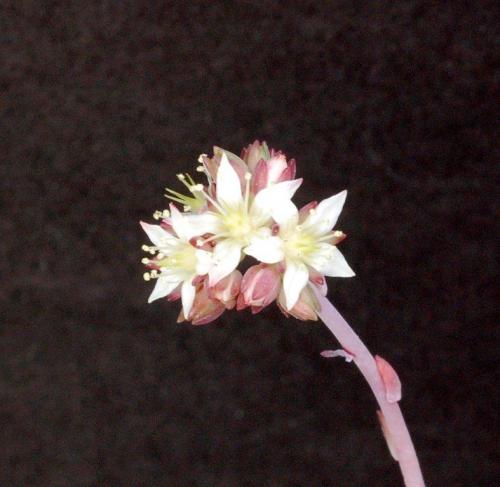
Photos Bernie DeChant
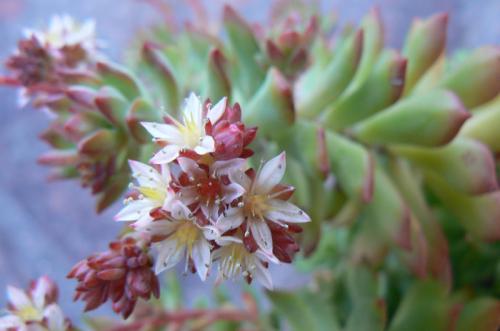
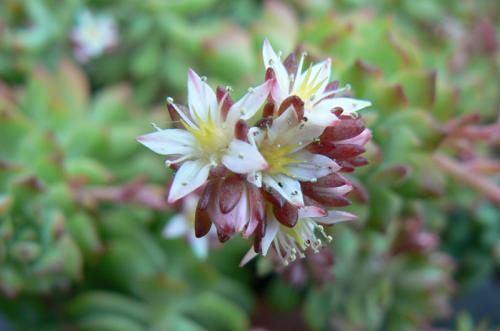
Sedum cuspidatum in Perth :
.jpg)
Plant Joan Steele, photo Noelene Tomlinson